Toyota Marketing Strategy: The Pride of Japanese Quality?
Toyota is, arguably, one of the best car manufacturers on the planet. The Japanese multinational automotive has been making innovative vehicles for nearly a century, but its position has been maintained very well. Toyota was the tenth-largest company in the world by revenue in 2019.
It is not just about the company’s quality; the Japanese pride of good products can be seen everywhere with Toyota. Everything is measured to achieve perfection, even the noise the car doors make when they close and open. As details are closely inspected, good workers perform vehicle inspection app thoroughly to ensure an amazing manufactured automobile.
Steadily, Toyota gained the top position in the automobile industry. It wasn’t quick or glamorous; it was efficient. And the company is proud of its principals and achievements, which is reflected in the marketing strategy. Toyota operates internationally, so it needs to adopt different marketing tactics to succeed in different locations. In this article, I’m going to give you an inside look at Toyota’s marketing strategy and how it made the whole world recognize the quality Japanese can deliver. Let’s rev the engine!
Toyota introduction
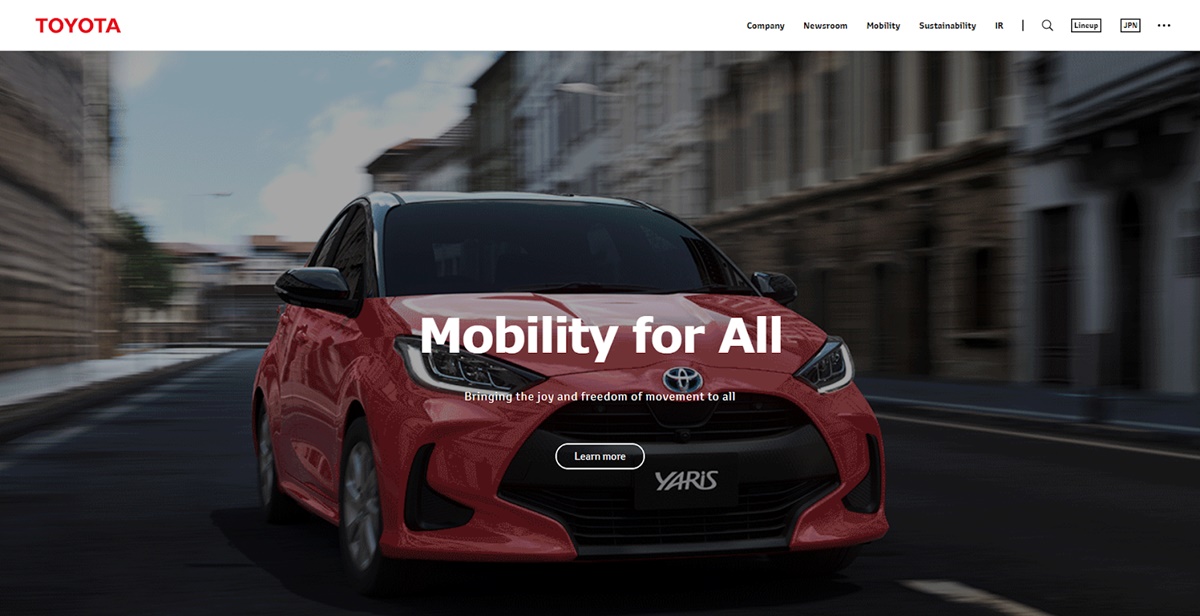
Toyota is a Japanese automotive manufacturer with the headquarter in Toyota, Aichi. Japan. The company was founded by Kiichito Toyoda in 1937. In 2019, the multinational corporation consisted of 370,870 employees worldwide and ranked tenth among the companies with the highest revenue in the world. It is the largest automobile manufacturer in Japan, making $275.4 billion in revenue in the first quarter of 2021.
In 2012, Toyota was the largest automobile manufacturer in the world, producing more than 10 million vehicles per year. In July of the same year, the company reported producing its 200 millionth vehicle. Until the early 1980s, Toyota was not very successful in the foreign market, but a sudden increase in exports, especially to the US, led to booming trade friction, and the company started full-scale efforts to produce products for oversea markets. This led to the global expansion of the Toyota brand.
During history, Toyota saw many events with negative impacts. In 2008, impacted by the global recession, sales of the company dropped by over 900,000 units compared to the previous year. Still, overseas sales in 2009 account for more than 80% of the total sales, a significant number for the tough time. In 2011, Japan suffered from a series of natural disasters of earthquake and tsunami. This led to a severe disruption of the production chain and a drop in exports. The company is estimated to have lost 150,000 units of product to the tsunami. The production in Thailand suffered from flooding during monsoon season in the same year and lost 240,000 units of production.
However, just three years later, the automaker corporation topped global sales in 2014. In 2015, Toyota announced that it would invest $1 billion in artificial intelligence and robotics research. The investment was surprising, but as expected from the global market leader in hybrid electric vehicles and hydrogen fuel-cell vehicles.
Toyota engages in the manufacturing and sales of motor vehicles and parts. The automotive products include passenger cars, trucks, minivans, related vehicle parts, and accessories. The company also develops intelligent transport systems, provides financial services, and builds robots. The company’s tagline is currently “Mobility for all.” Its global mission is to “lead the future mobility society; enriching lives around the world with the safest and most responsible ways of moving people.”
Toyota SWOT analysis

In this section, we are going to use the SWOT analysis to break down the Strengths - Weaknesses - Opportunities - Threats that Toyota faces. This should give a multi-dimensional view of the company and how it can take advantage of its resources to thrive in the market. And if you want, you can perform the same analysis on any other company.
Toyota’s strengths
Toyota is one of the most well-known brands in the world with an experience that cannot be overemphasized in the automotive manufacturing industry. One of the company’s strengths is the diverse product list with a wide range of segments for customers to choose from based on their lifestyles and preferences. Toyota has a pioneering assembly line that allows the products to be both affordable and efficient.
With the international expansion, Toyota is the largest automobile manufacturer in the country and the second-largest in the world, just behind Volkswagen, based on the data of 2018 unit sales. Compared to competitors from America like General Motors or Ford, the company uses low cost to gain a competitive advantage in the industry. It was an effective marketing strategy to penetrate the US market back in the 80s.
To achieve the cost leadership strategy, Toyota adopted lean production, careful control of suppliers, efficient distribution, and low service cost for quality products. Slowly but steadily, the quality and efficiency of Toyota automobiles earned reputation and affection from consumers.
Toyota’s weaknesses
Toyota’s main weaknesses can be listed as three main points: Hierarchical organization structure, Effects of product recalls, and Secrecy in organizational culture. First of all, Toyota’s global hierarchical organization structure can prevent maximum flexibility for regional operations. The company has a long history of presidents from the Toyoda - the founder family and sees the most important decisions coming from a board of directors with chairmen closely related to the family. This can result in less flexible decisions, especially in a global corporation.
Resulting from this structure, the company has a culture of secrecy, which is a weakness that reduces response times in occasions of emergency or sudden problems. In addition, massive product recalls damaged the brand image. From 2009, Toyota has announced many recalls for products worldwide, with more than 20 million vehicles recalled, weakening the production line since time and capacity could be used for distribution instead.
Toyota’s opportunities
According to the corporate responsibility of Toyota, the company promised to be environmentally friendly, carving a way to create cleaner engine emissions. This act created a great brand image in the public’s eyes with the help of environmental groups to promote the company’s products. Another viable prospect of Toyota is that it will invest in solar power, which is lined up with the trend of electric automobiles.
Toyota has many chances to regionalize and specialize the worldwide operations which can enhance the multinational operations. Also, the bold investment in technology and existing innovations capabilities on automobiles will provide an opportunity to make a better scope in the market than competitors.
Recently, Toyota announced that it is going to build a prototype city of the future at the base of Mt. Fuji in Japan. Called the Woven City, it will be an ecosystem that is powered by hydrogen fuel cells - green energy. This opens opportunities for Toyota to be more than just an automobile manufacturer, an innovator for the future.
Toyota’s threats
As an international corporation and an industry leader, Toyota faces very tight competition as to any other global organization. Rivalries bring new models and technologies every year, and the company has to keep up with the ever-changing pace of the world tech as well. New players with high ambition, such as Tesla, can seriously reduce the brand’s product desire rate among consumers.
The product’s price is affected by the risks of new situations with raw materials like fuel, glass, steel, and rubber. The product’s features and customer services have to be adjusted constantly to meet new standards. The economies in the US, Europe, and the Pacific seem to be slowdowns, which reduces the need for automobiles.
Shrinking markets equal a shrinking margin, which leads to a threat to the company’s financial status. Due to the overall position of Toyota in the world’s industry, overseas competitive activities have been largely affected by global events. This is unavoidable but still represents a large threat for many years to come.
Toyota 4p’s marketing mix
The target customers of Toyota are in the age group of 30-50 years old with middle-range income and looking for automotive vehicles with good value for money. When thinking about Toyota cars, people think of durability, sustainability, quality, safety, reliability, and innovation. To build this reputation among target customers, Toyota needs a suitable marketing strategy. In this section, we will break down the four pillars of Toyota’s marketing strategy, including Product - Place - Pricing - Promotion.
Toyota’s product strategy

Toyota has a diverse set of products. Each line of automobiles has its own organizational output for a group of customers. The following are the product lines that Toyota’s products have:
- Toyota automobiles
- Lexus automobiles
- Marine products
- Welcab series
- Spare parts and accessories
- Engines
The automobiles are the most popular, or the signature products of the company. Lexus automobiles are the luxury lines of cars. On the other hand, the Welcab automobile series are modified for people with disabilities and the elderly. With other lines of products, Toyota reaches a wide market and reduces the risk from focusing on only one market through a diverse product mix.
A product of high quality is often self-marketed, and it is what makes Toyota vehicles so desirable. With nineteen car models, the categories for the car of Toyota are:
- Passenger - small, medium, and large-sized vehicles. We can name Yaris, Aurion, Tarago, Camry, Ruckus, and Corolla.
- SUVs and 4WD - Rav4, Parado, Kluger, and Landcruiser 200
- Hybrid - Camry and Prius
- Commercial - Coaster, Landcruiser 70, HiAce, and HiLux
Customer satisfaction is at the top of the priorities for Toyota, so the company has a research center dedicated to gathering and analyzing data from the consumer expectations toward Toyota. To reduce the effect of the oil market, Toyota has put together the Hybrid product line. The first Hybrid car - the Toyota Prius can drive up to 48 miles with one gallon of gas. Considering the high demand for sportier models, it’s not uncommon to find a Toyota Supra for sale among the vast range of vehicles the company offers.
Toyota’s place strategy

Dealerships are Toyota’s main locations for distributing products, so they are important in the marketing mix to determine the venues where consumers can view the products. The company always tries to place the customer first and knows the importance of how the target audience can access the automobiles. The sales staff at each dealership often work in teams of seven or eight members similar to the formations in an assembly factory.
All the staff is highly skilled not only in sales but also product information, order taking, data collection, and finance insurance. Toyota focuses on the pull strategy and makes cars suitable to customer demands. Besides, it also has sales representatives going from door to door in Japan to promote the company’s automobiles.
A typical dealership of Toyota will try to minimize the supply chain costs and keep a good service level along with high-quality products. Toyota organizes suppliers into different tiers. The first level of suppliers can work with a product development team. The second tier suppliers are in charge of making individual parts. This enables cross-sharing of the labor force as Toyota can send staff to the suppliers in case the work is overloaded.
Toyota’s pricing strategy

Toyota could become the second-largest automobile manufacturer in the world due to innovative designs and heavy investments in promotional activities to entice consumers on many continents. It builds high-quality vehicles with moderate prices.
The selling prices of a product is often determined by the cost and the profit taken together. Any slight increase in the production cost will directly affect the customers in terms of the selling price. However, Toyota has a different approach to this. The formula is still the same, but it slightly altered to make a huge difference. Instead of calculating the selling price, Toyota calculates the profit first. So it can sell with the formula of price - cost price = profit. The company believes that the market mechanism and consumers determine the selling price.
A detailed vehicle history report can both increase your chances of selling as well as potentially help fetch a higher price. However, some car condition reports are better than others. The best vehicle service history reports are detailed and transparent —don’t try to hide or downplay any issues, open recalls, or defects.
Toyota also gives a lot of attention to eliminating waste. This leads to an increase in the profit over time due to good pricing, high quality, and low-cost vehicles. According to a 2017 report, Toyota unit sales were 10,386,000 worldwide. The vehicles have many price ranges, from $18,990 and go up to $80,000 based on the model, additional parts, and making cost. The company uses low cost and differentiation to gain a competitive advantage in the automotive industry maximizing cash for toyota. Compared to competitors, many consumers can find Toyota products have better quality, design, and technology.
Toyota’s promotion strategy
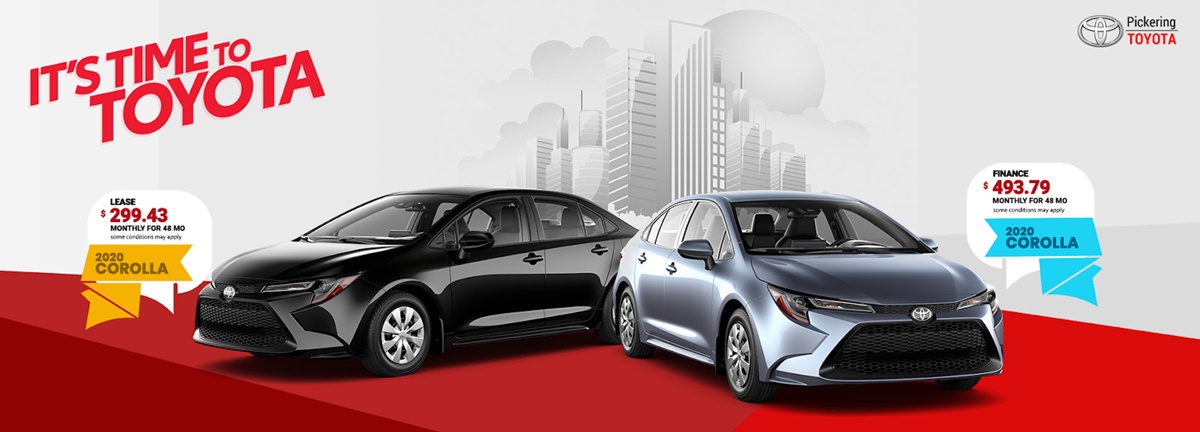
Toyota uses many different promotional strategies to increase the sales volume. It advertises through billboards, radio, newspapers, flyers, television, the Internet, yellow pages, word of mouth, and brochures. Catchy slogans are often used to draw attention to the brand. Since 2004, the slogan has been “Moving Forward. However, a new tagline was used in the US market as “Let’s Go Places.”
Toyota uses personal selling for dealerships to personally promote Toyota products to potential customers. The good public relations and dedication to environmentally friendly solutions build a positive brand image for Toyota. On the other hand, special deals are offered to customers with infrequent sales promotion. Also, it sometimes uses direct selling to offer better deals for corporate clients. Through a flexible promotional strategy, Toyota has a comprehensive way to promote the brand and its products.
Toyota core marketing strategies & campaigns
Marketing strategy is the course of action that an organization intends to implement in order to achieve certain marketing objectives. Toyota’s marketing strategy varies depending on the market requirements of different geographical locations. Emphasizes the pride of Japanese quality, and one way the brand delivers on that promise is through their Retractable Tonneau Covers, which offer both functionality and sleek design for Toyota truck owners. It also has a large dealership network to provide products globally and a culture of innovation to keep every automobile at high quality. But, most importantly, Toyota always put the customer’s best interests on the highest priority for the marketing strategy. This can be the secret to the company’s long success. USJunkYards, similarly, implements a robust marketing strategy to effectively reach its target audience and achieve its business objectives. With a focus on providing high-quality used auto parts, USJunkYards tailors its marketing approach to cater to the specific needs and preferences of customers in various regions across the United States. Through emphasizing the reliability and affordability of their products, USJunkYards aims to establish itself as a trusted source for automotive parts and accessories. Additionally, the company leverages its extensive network of junkyards and auto salvage yards to ensure a wide range of inventory and efficient product distribution, reflecting its commitment to customer satisfaction and convenience.
In this section, let’s see the core marketing strategies of Toyota, as well as some noteworthy campaigns, and see if the company is the role model that other automotive companies need to learn.
Customer’s benefits are always the highest
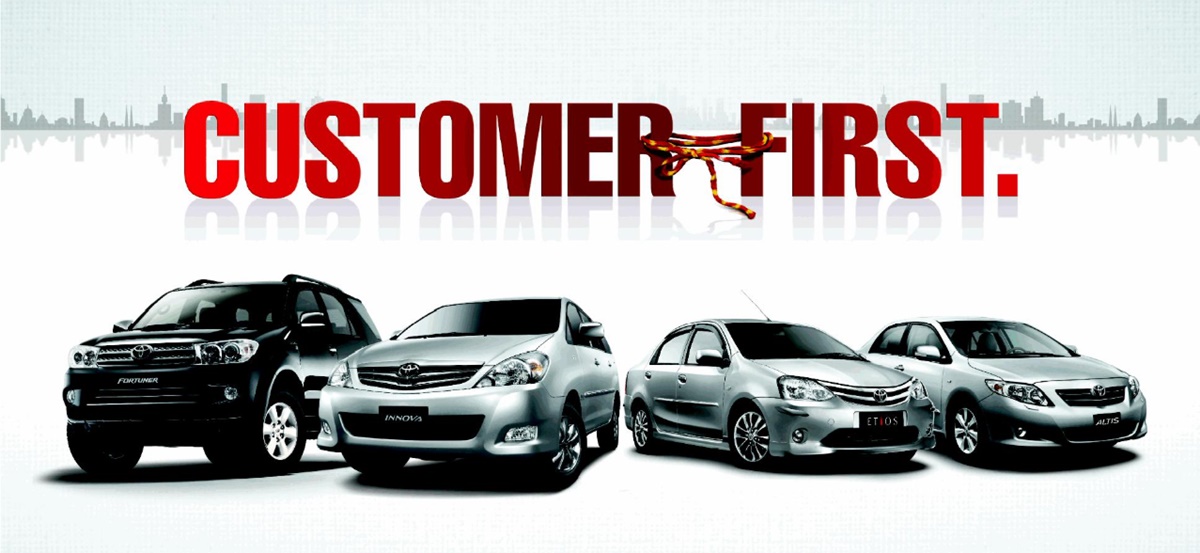
The priority of Toyota’s management teams is to increase shareholder value steadily in the long run. As the company continues to expand beyond Japan, it will increasingly face market risks, which can vary from country to country. To create a company that can withstand worldwide volatility at all times is difficult. However, Toyota uses the concept of balance fluctuations (heijunka), part of the Toyota Production System, to reduce risks. The basic philosophy is to produce vehicles for where the customers are staying. This strategy gives the ability to hedge against fluctuations in foreign currencies and still provide the best experience to the customers.
Customer first is one of Toyota’s core tenets. And by customers, the company doesn’t mean just the end customer. On the production line, even the person at the next workstation is considered a customer. This leads to great team work and gradual analysis to make sure everything is perfect. Put it another way, Toyota aims for continuous improvement to provide the best products for customers, both outside and inside.
While this is more like a production strategy, the philosophy has actually been very famous and is a considering factor for consumers to select Toyota products. By promoting a working attitude that is respectful towards customers, Toyota is able to portray a positive image of an automobile brand that people can trust. That is the Japanese way the whole world knows and loves.
In 2019, Toyota proudly introduced the new model of Prius - a hybrid automobile and invited consumers to go more places in the “It’s Unbelievable” campaign. The company used smart and joyful advertising to demonstrate the key advanced technology features of the car in many environments of snow, highway, and parking. What is special is that the campaign connected with new audiences like Hispanic, Asian Indian, and East Asian.
Differentiation strategy for each region
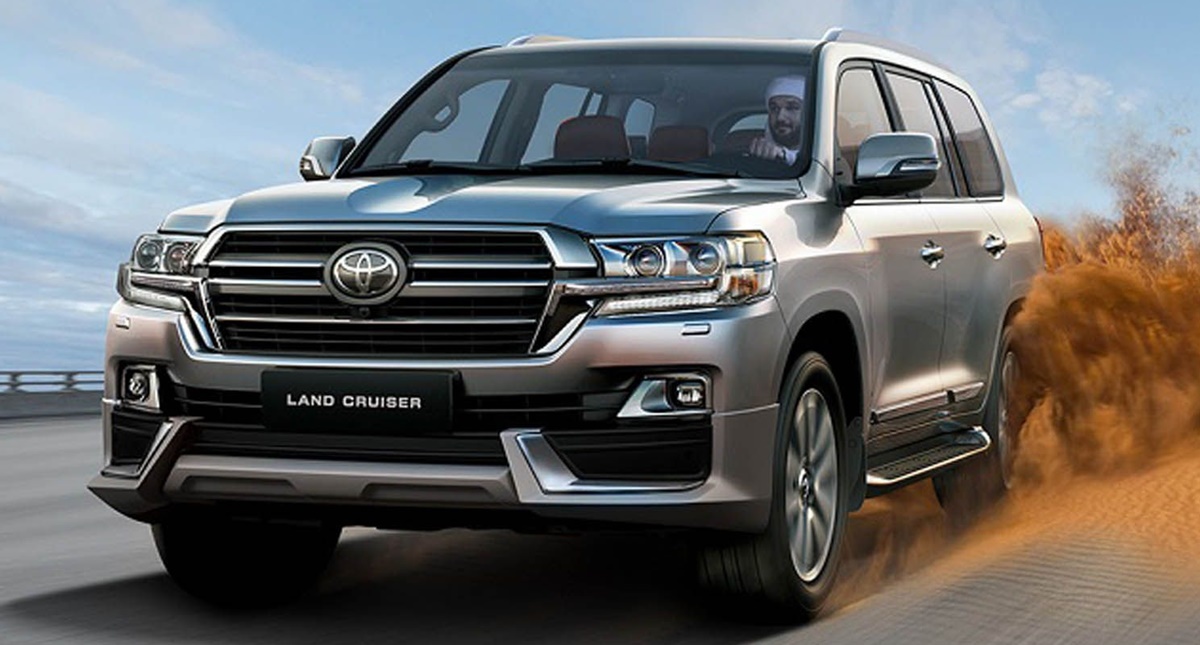
Toyota’s main marketing strategy is a differentiation strategy, which aims at making its products different from competitors’ products. Competitors such as Ford or General Motors are trying to gain market share using the same global marketing strategy, while Toyota applies specific marketing strategies to each market. Ford produces one type of car at a time and makes it to the global market, while Toyota manufactures products to sell globally and for a particular country or region. In a country with special weather conditions such as Saudi Arabia, Toyota provides specific automobiles to suit their customers.
Even with something like slogans, Toyota decided to make it different for each country. For Australia, Toyota’s slogan is “Oh What a feeling!”. For Europe, the slogan turns into “Nothing is impossible”. While in Japan, the company’s slogan changes very often; the current version is “Start your impossible” since 2017. And in the US, the slogan has been “Let’s go places” since 2012.
The differentiation strategy adopted by Toyota helps the company produce products that are different from those of competitors. The strategy allows Toyota to price the products strategically, because its products are different from those of competitors. Toyota’s marketing effort has also been successful in gaining market share, as it can deliver products according to customer needs. The marketing goals in the United Kingdom and Saudi Arabia were achieved due to different marketing strategies applied in different countries.
On the other hand, it is also found that Ford’s marketing strategy to sell the same product globally led to failure in 2012 since it generated losses. This emphasizes that any company’s marketing strategy should be set according to the specific market, and one strategy cannot fit all geographic locations. Therefore, the differentiation marketing strategy plays a vital role in Toyota’s success and is very helpful in increasing sales or achieving marketing goals.
A large dealership network across the globe
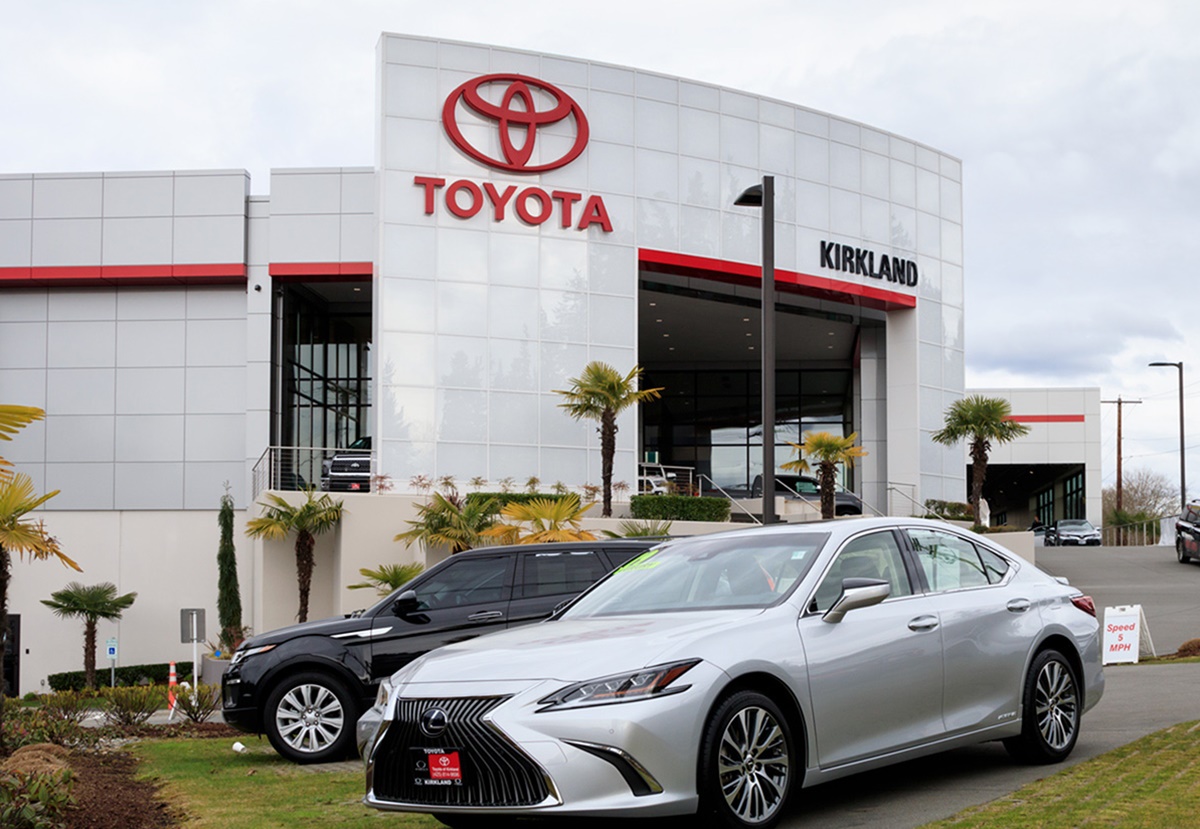
Ever since Toyota is established, the founder Kiichio Toyoda has passed on the view of marketing as a critical tool to build a successful company. And the dealership network is the most focused marketing channel that Toyota uses to connect with customers. In 2015, Toyota’s network had 180 dealerships with nearly 4,700 sales and service outlets inside of Japan. Out of these, only 15 dealerships are owned by the company, the rest are independent.
Outside Japan, Toyota automobiles are sold through 170 distributors in nearly 190 countries and territories. The company maintains the large network of dealers through the distributors. Toyota also has factories in many parts of the world, manufacturing or assembling vehicles for the local markets of Japan, Cana, the UK, the US, South Africa, France, Brazil, China, Vietnam, Mexico, Thailand, Russia, and more.
A company’s culture of innovation

Toyota expanded quickly and on a large scale, but the company’s staff seem to be handling the fast change very well. To keep the company’s fundamental operating principles suitable for any situation, Toyota has its own management philosophy called The Toyota Way - an expression of values and conduct guidelines for every Toyota employee worldwide.
Under the most two important headings of Respect for People and Continuous Improvement, Toyota summarizes the values and guidelines that employees should follow. This makes staff always consider long-term thinking, problem solving processes, people development, and continuous root problems solving. The Toyota Way nurtures the employee’s ability to be dissatisfied with the status quo and constantly improve the products.
Just look at the ambitious plan of building a whole futuristic city, we can see how Toyota aims for long-term success. This is also a positive brand image that makes consumers feel great about purchasing from Toyota. Who doesn’t want to be a part of the future?
What you can learn from Toyota
Here is a quick recap of what you can learn from the Toyota marketing strategy:
- To be a global company that keeps growing, you always have to put customers as an important factor.
- Develop different strategies for each country and region.
- Create a company’s culture to encourage innovation and long-term thinking.
Conclusion
Once a company can indicate the direction that it should move and direction is right, you can let the whole production system do things necessary to get there. Step by step with a long-term strategy, that is how Toyota gets to its current position as a leader in the automotive industry, and the pride of Japan. Almost a hundred years of innovation already, but Toyota still aims higher and higher.
Do you think your brand can stand strong after a decade like Toyota? What marketing strategy do you want to learn from the top automobile manufacturer of Japan? Let me know in the comments section below, and we will discuss your vision. Thanks for reading!
New Posts







